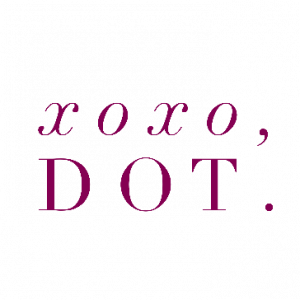If life were anything like the movies, hormones would strictly exist in high school, and acne would disappear by adulthood – revealing fresh, clear skin. But alas, this is reality, and hormones still impact us in ways we wish it wouldn’t throughout our adult lives. A prime example of this is hormonal acne, which can follow women through their entire reproductive cycle, and still linger during menopause. Let’s get to the bottom of hormonal acne, so you can learn how to get ahead of it if it routinely creeps up on you during your time of the month.
What is hormonal acne?
Hormonal acne is pretty self-explanatory. It’s acne that flares up due to fluctuating hormones – in some cases as a biproduct of menstruation. It’s estimated that 50 percent of women aged 20 – 29 and 25 percent of women aged 40 – 49 experience hormonal acne.1
Hormonal acne is different from other types of acne, in that it is caused by internal stressors (hormones), rather than external. For instance, build-up from unwashed makeup or certain foods can cause a one-off breakout, typically alleviated by drinking water, a spot treatment of sorts, and clean foods. Hormonal acne tends to occur more habitually, and in some cases more severely (more blemishes).1
Does it look different from ‘normal acne’?
Yes, and no. Hormonal acne can take the shape of whiteheads, blackheads, small blemishes or even cysts. One notable characteristic is that hormonal blemishes generally appear closer to the jawline or around the bottom of your cheeks.1 While severity will vary from woman to woman, it’s important to track symptoms that occur month over month. If acne becomes persistent, painful and starts to impact quality of life, talk to a dermatologist about finding a treatment, or visit your OB/GYN to determine if there may be a more serious condition causing severe hormone fluctuation.
When does it happen?
For women, hormonal acne is most likely to begin breaking out during the luteal phase (otherwise known as PMS).2 This is the most common time for hormonal acne to flare up, as estrogen levels drop to their lowest, and testosterone levels rise. Increases in progesterone are typically to blame for more oily skin during PMS, as it can cause pores to shut which traps in oil, bacteria and other build-up from your day.2
What can I do?
If you find that your symptoms are mild, you can turn to an OTC acne treating cleanser to help alleviate irritation and reduce the look of blemishes. If you suffer from cystic acne related to shifts in your hormones, you may want to consider talking to a doctor about a prescription treatment. Doctors will often recommend a topical treatment, to address the blemishes directly, or an oral treatment (e.g. birth control pills) to help balance your hormones.1,2
Ask your doctor about taking the natural route to eliminate redness and help pimples shrink. Teatree oil and green tea both contain anti-inflammatory properties1 that could help you nip them in the bud.
What about other symptoms?
If you’re challenged with hormonal acne during PMS or your period, in addition to painful symptoms like severe cramps, heavy bleeding, pelvic pain, etc., consider talking to an OB/GYN about your symptoms, as they could be tied to a more serious, underlying condition.
Follow Change the Cycle on social media for weekly tips, and helpful resources and information on all things uterine and pelvic health.

References
- Hormonal Acne: Traditional Treatments, Natural Remedies, And More. Accessed September 3, 2019. https://www.healthline.com/health/beauty-skin-care/hormonal-acne.
- VeryWell Health. How the Menstrual Cycle Affects Acne. Accessed September 3, 2019. https://www.verywellhealth.com/is-premenstrual-acne-real-15686.